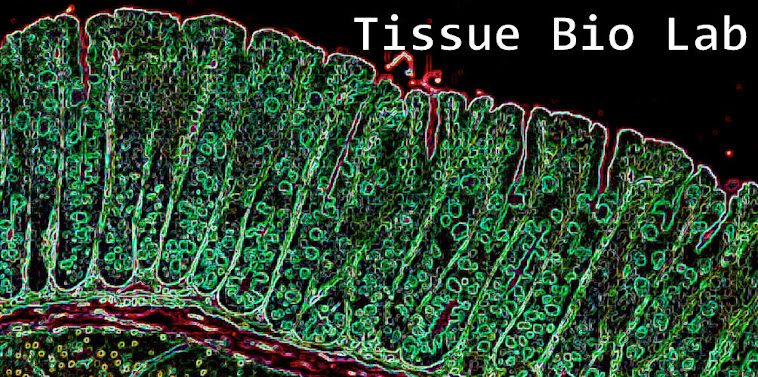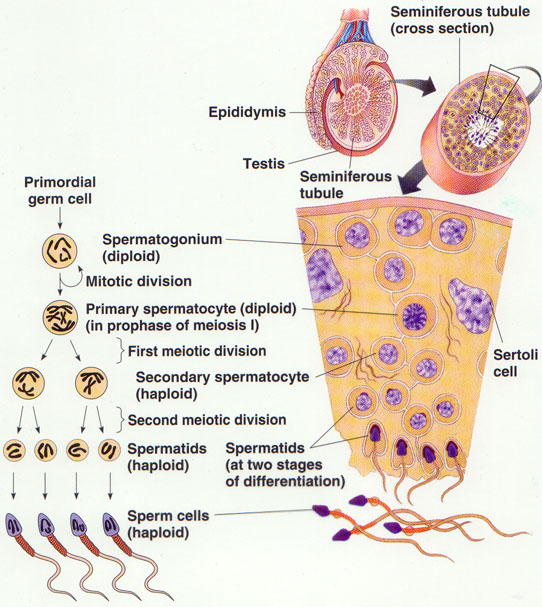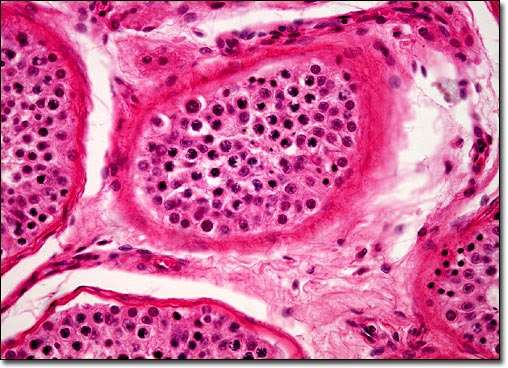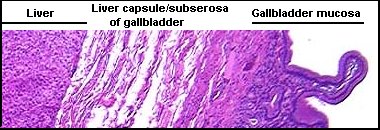If you are, I don't blame you. I know there is quite a bit of
memorization for this week. Learn it! It will help you in almost every
bio class you have here on out. This week the anatomical structures
aren't too difficult, but make sure you know what hormone(s) they all
secrete and the effect of those hormones.
Things to remember:
-The
part of the pituitary that is connected to the stock is the
neurohypophysis (posterior pituitary). The neurohypophysis doesn't
produce any hormones, it simply stores them for secretion. While the
adenohypophysis is usually darker/brighter (because of the acidophilic
chromophils), color can sometimes be deceiving.
- some mnemonics to help remember what's what in the pituitary:
Americans
Drive
Intense
Trucks - remember that the pars
distalis, pars
intermedia, and pars
tuberalis are all in the
adenohypophysis
- another way I remember the pars distalis is by thinking of a distillery - all the hormones of the anterior pituitary are made, or 'distilled' in the pars distalis
Also, remember the mnemonic for the hormones of the anterior pituitary that you learned in anatomy?
FLAT PGM - this time, we're going to divide it by basophilic and acidophilic chromophils
B-FLAT -
basophilic chromophils secrete
FSH,
LSH,
ACTH, and
TSH
GAP -
acidophilic chromophils secrete
GH and
Prolactin
MAKE SURE that you know ALL of the hormones that are secreted by each of the cells in the different organs and what each of those hormones does!!!!!!
Also, definitely know how to identify each of the 3 cell types found in the pars distalis
on your own slides!!!!
Someone asked me in lab if the
pars tuberalis completely surrounded the infundibulum - I know this diagram makes it a little confusing, but the pars tuberalis
only surrounds the
anterior aspect of the infundibulum.
This diagram is to show the difference between the anterior and posterior pituitary - notice how the neurohypophysis is continuous with the hypothalamus and is made of neuro-secretory cells? While the adenohypophysis is almost like a separate organ dangling off the infundibulum - it is made of a different cell type and actually makes its own hormone products.
 |
| All three
pictures here show the division between the adenohypophysis and
neurohypophysis, What cells can you see in the last picture? You should
be able to point out 5 kinds and know what they secrete. |
 |
| See the 3 different types of cells? Which ones are the acidophilic chromophils? Basophilic? Remember, cells that are acidophilic tend to stain brightly, or appear more 'warm' in color |
-Thyroid/parathyroid: The parathyroid sits on the
thyroid. Remember that the thyroid has minimal CT which is how you can
distinguish it from the mammary. Where on the picture below would you
find follicular cells? Parafollicular cells? What do they both secrete??
 |
| Thyroid Gland |
 |
| Border between thyroid and parathyroid. |
 |
| Parathyroid -
You can see principal/chief cells, oxyphil cells and unilocular
adipocytes in this shot. Can you point each of them out? Remember that
chief cells are the smartest, look like brains (chromatin) and the
oxyphil cells are more dense looking. |
-Pancreas -
 |
| Where in this
picture would you find beta cells? Alpha cells? What do they secrete?
What secretes somatostatin? What does it do? Sorry for so many questions
:) |
-Know
the layers of the adrenal gland!! It's easy to identify the medulla,
then if asked to point to a specific layer (zona glomerulosa, zona
fasciculata, zona reticularis), point to the outside, middle or inside
of the cortex, respectively. Know what each zone secretes (both the
general class of hormones and a specific example, e.g. glucocorticoids
and cortisol). The four pictures that follow are all of the same gland.
 |
| Human adrenal gland! It's important to keep the bigger picture in mind. |
 |
| Zoomed in...
Can you name the three layers of the cortex and find the medulla? What
doe the layers of the cortex secrete? The medulla? |
 |
Find the medulla..................
Trick question! There is no medulla in this shot, just doubled up cortex. See the pic below for an explanation. |
Guys, please, please, PLEASE spend some quality time with the adrenal gland - not only is there a deceptively large amount of memorization associated with it but it will reappear in almost every bio class from here on out!!!! (Not even exaggerating!)
A mneumonic that helps me remember the zones of the adrenal cortex with the class and name of the hormone associated with them is:
Great Men Always Find Cute Girls Really Darn Attractive (eg. glomerulosa goes with the mineralcorticoid aldosterone, etc.)
-Finally,
the picture on p. 54 of your lab book is a cross section of a villus in
the small intestine. You will find argentaffin cells all along the
villus if you look. They are darker and wedge shaped. Know what they
secrete!! Check out the picture below that is stained a bit differently
than what you're used to seeing. The arrow is pointing to the
enteroendocrine/argentaffin cell. Notice the difference between it and
the goblet cells below it (goblet cells have no noticeable nucleus).
Good luck! Let me know if you have any questions.
Endocrine Review Sheet
Key: Know the anatomical and histological names (including modifications) for the following bolded structures; assume that you will be required to find the structures indicated by * on your own slides.
***This list is not guaranteed to be exhaustive, and only includes terms from this unit. While we will not focus on quiz information from previous weeks, knowledge of previous material may be useful***
Focus on endocrine histology, but keep in mind all of the following terms. Know the endocrine secretions and functions as outlined in your manual.
Pituitary Gland
Anterior Pituitary (Adenohypophysis)
· Pars distalis*
· Chromophobes*
· Basophilic chromophils*
· Acidophilic chromophils*
· Pars intermedia*
· Pars tuberalis*
Posterior Pituitary (Neurohypophysis)
· Herring bodies*
· Pituicytes*
Thyroid
· Follicular cells*
· Parafollicular cells*
Parathyroid
· Principal (chief) cells*
· Oxyphil cells*
Pancreas
Know the 4 types of cells found in Islets of Langerhans, the general region where they are found, as well as their secretions
· α-cells
· β-cells
· δ-cells
· PP-cells
Stomach
· G-cells
· Parietal cell*
· Chief cell*
Adrenal Gland
For each region of the adrenal gland, know the class of hormone that gets secreted as well and a specific hormone example.
· Zona glomerulosa*
· Zona fasciculate*
· Zona reticularis*
· Medulla*
Enteroendocrine Cells
· Argentaffin cells*


































